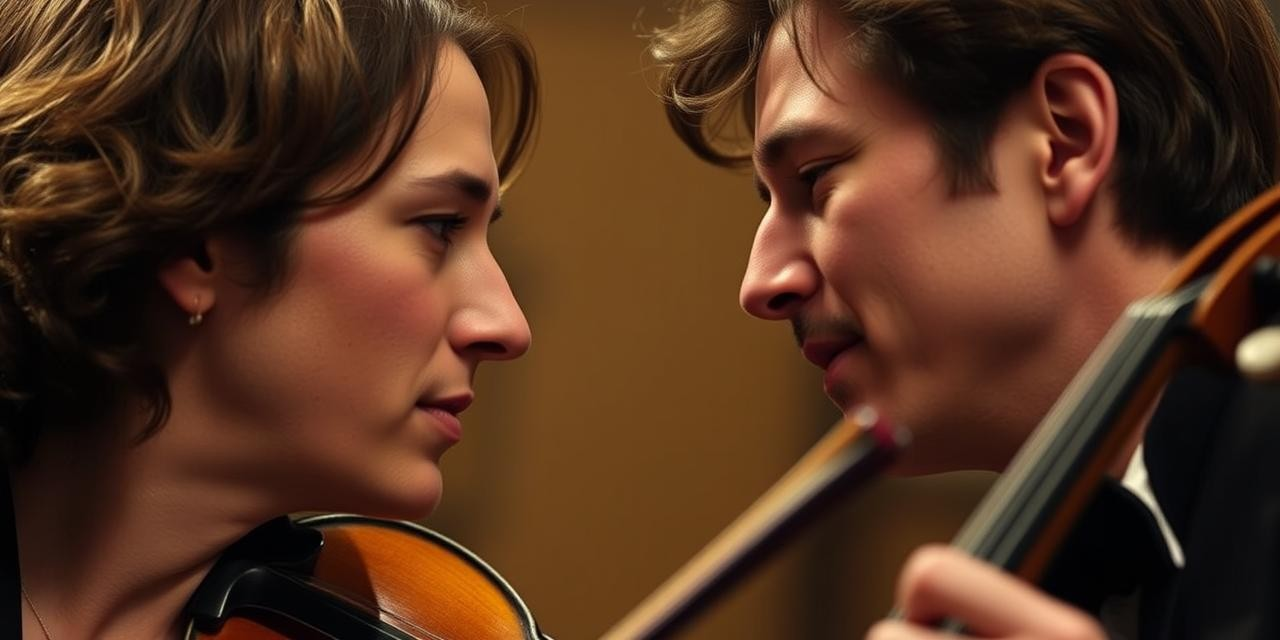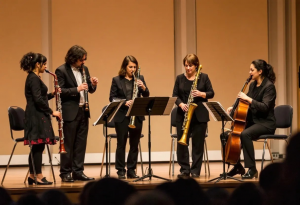Playing in a small ensemble? It’s like a conversation. A really intense, musical one. You’re not just playing notes. You’re talking to each other through your instruments. It’s a blend of your unique voice and the group’s collective sound. Tricky, right? So, how do we make it work? How do we get that magical musical connection?
The Symphony of Communication
Forget just reading the notes. Musical communication goes way deeper. It’s about anticipating what your fellow musicians will do. Understanding what they mean. Responding in real-time. Feeling the music together. That’s the key.

Want to get better at communicating in your ensemble? Here’s the breakdown:
- Listen Up: Really hear what everyone’s playing. Don’t just wait for your turn. Catch their phrasing, dynamics, the whole deal.
- Watch Closely: A nod, a breath, body language…it all speaks volumes. Be aware of your own cues and learn to read others.
- Talk it Out: Got a musical idea? A challenge? Speak up! A collaborative environment builds trust.
Pablo Casals said the cello is like a beautiful woman who doesn’t say a word, but makes you feel everything. Ensemble playing is the same. It’s about creating a shared emotional experience. No words needed.
The Power of Listening
Listening isn’t passive. It’s active. It’s about getting the intent behind the notes. Nuances matter. Phrasing, dynamics, timbre – they all paint the picture. Think of listening as a constant musical dialogue.
Want to level up your listening game? Try this:
- Zoom Out: Don’t just focus on your part. Hear the whole sound. How do the instruments blend?
- Find the Leader: Who has the melody? Adjust your playing to support them.
- Lock In: Is everyone playing in time? With the same feel? Rhythmic accuracy is crucial.
- Tune In: Intonation, intonation, intonation! Make sure everyone’s in tune.
Blending Individual Sounds
A great ensemble sound? It’s about blending, not overpowering. You don’t lose your individuality. You complement each other. Think of it as weaving a tapestry. Each instrument adds to the richness.
How do you blend effectively? Here are a few ideas:
- Match Tones: Aim for similar tonal qualities. Adjust your embouchure, bowing, whatever it takes.
- Balance the Levels: No one should dominate. Be mindful of the dynamics.
- Sync Up: Articulation markings? Nail them together. Uniformity is key.
- Fine-Tune: Adjust your intonation to match. Harmony is the goal.
The Dance of Individuality and Cohesion
The best ensembles? They balance individual expression with unity. Everyone brings something unique. But they also work together. It’s a dance. A constant negotiation. Compromise is essential.
How do you find that balance?
- Respect the Voice: Value each musician’s contribution.
- Be Flexible: Be willing to adjust your own interpretation.
- Share the Vision: Understand the music’s message together.
- Trust Each Other: Create a safe space for sharing ideas.
The Rewards of Ensemble Playing
Ensemble playing is hard work. But the rewards? Huge. Creating something beautiful together is transformative. The connection, the joy, the shared accomplishment… it’s all worth it.
And it’s not just personal. Ensemble playing makes you a better musician, period.
- Sharper Skills: You listen better, play more accurately, understand music more deeply.
- Better Communication: These skills translate to all areas of life.
- More Creative: Collaboration sparks new ideas.
- Deeper Appreciation: You experience music on a whole new level.
Ultimately, ensemble playing is about connection. It’s a musical conversation. It’s about finding that sweet spot between individuality and unity. And creating something truly special.
The Conductor’s Role (or Lack Thereof)
Some ensembles need a conductor. Others? They thrive on a democratic approach. Leadership rotates. It emerges organically. This demands even more communication and trust.
Thinking of going conductor-less? Keep these things in mind:
- Shared Ownership: Everyone is responsible for the performance.
- Clear Signals: Establish cues for entrances, tempo changes, etc.
- Super Listening: Pay even closer attention to each other.
- Rotating Leadership: Let different members lead different sections.
Final Thoughts
Ensemble playing is a journey. Embrace the challenges. Celebrate the wins. Never stop striving for that beautiful, shared musical experience. It’s worth every bit of effort.

